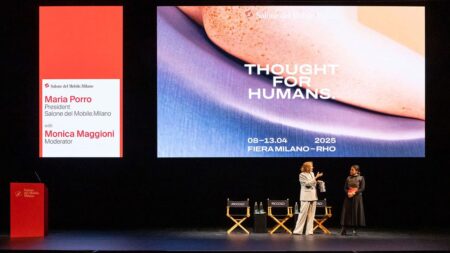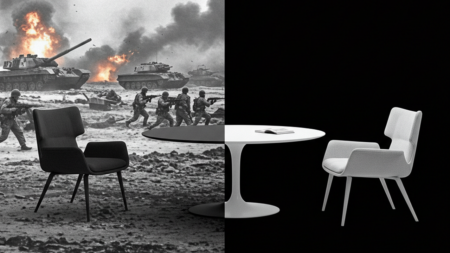“Winning an Oscar is akin to winning a football World Cup and that’s the only way I can quantify it,” states James Price in a recent interview with Homecrux. The British production designer, fresh from his first Oscar win is carousing in a whirlwind of celebrations. “There’s a big party being arranged for me. So I’d soon be off to Ireland because that’s where my wife is from.” James will mark his attendance in an extravagant affair hosted by his parents, where he will reunite with his extended family, later. “There are 85 of us, aunties, uncles, and first cousins,” he remembers accurately.
The happiness sparked by Oscar victory is not only confined to his family circle but the whole of Great Britain and neighboring nations. From the streets of London to the pubs of Dublin, the mere sight of James Price, holding the prestigious Academy Award, has brought delight to both strangers and friends alike.
For James, seeing his family, friends, and compatriots joyful is an emotion that eclipses even the loftiest of awards and surpasses moments of childhood struggles. Amidst the glitz and glamour of the Academy and the BAFTA, the British Production Designer is reminded of his true purpose as an artist; which is not to chase accolades but to sculpt narratives that resonate with audiences for years to come.
This is what he exactly did with Yorgos Lanthimos directorial ‘Poor Things’ – a film that was widely praised for its visual appeal than storytelling. “We don’t get into filmmaking to win Oscars. We get into it to make films that are brilliant, possess a soul, and are going to live on. Moreover, the joy these films bring to others is quite something,” James admits.
But the grotesquely gorgeous and highly obnoxious visuals Yorgos Lanthimos had envisioned for his Black-comedy drama required the excellence of not one but two eminent designers. As a result, he hired Shona Heath to work alongside James Price.
Before building the larger-than-life sets, Shona Heath and James Price had to come to a consensus with each other. “Shona was very apprehensive in the beginning about the creative part. I was apprehensive about the fact that she didn’t have any film experience and wouldn’t necessarily know what she didn’t know. And so we just sat down, met one another, and figured out whether we liked each other, which we did, since we are a similar part of the world, similar kind of age. So our experiences matched a lot,” he states.
This unique partnership, born out of mutual respect and creative kinship between the dynamic duo, proved to be a stepping stone for the film’s success. The duo went on to use a mix of painted backdrops and LED screens to make the world look surreal. Elucidating his thoughts on their collaborative process, James emphasizes the fluidity and inclusivity that defined their approach.
“We talked about what we liked and didn’t like visually. And we created a sort of dogma about the film and, the whole time it was pitched to us as ‘you can do this week together and if you don’t like one another and Yorgos doesn’t like what you’re doing, you can walk away’, so the whole time the pressure wasn’t on,” he states.
The film was entirely shot in Budapest but had to reflect the environments of London, Paris, Lisbon, and Alexandria. The cues given by Yorgos Lanthimos to build these environments were simple and to the point. “His theory was, ‘I want it to feel like a 1930s studio movie, but not made in the thirties,” James informs.
“In terms of how we divide up the work, we didn’t go, you’re doing this, and I’m doing that. One day, I’d have a go at London (set). The next day, Shona would have a go at it, and then I’d go to Lisbon (set), and then we would rework it sitting together. So I think it evolved very quickly.” The gamble of putting two production designers in a single project ultimately paid off, as both Price and Heath (co-production designer) were successful not only in captivating the hearts and minds of the audience but also in impressing critics alike.
A film like Poor Things can test your mettle, especially when there is a big budget, fear of failure, tight schedules, and a co-production designer involved. But for James, his 20 years of practice in Wing Chun (a form of martial arts) and lately Brazilian Ji Jitsu keep him sane. Add some music to the lot, and it’s a complete package. “I alongside a bunch of friends have started up a night that’s called Soul Source. It plays like Rare Groove, Northern Soul, Funk, Jazz, Latin, and we do those every few six weeks or so,” he informs.
When the shoot started it was time for James to take a break from his avocation and dive into the intricacies of how Bella’s bedroom and bustling streets of Paris would look. Every set posed its own unique set of obstacles. So when tasked with crafting the interiors of Godwin House, the duo faced the challenge of striking a delicate balance between comfort and grief.


“Well, we knew that the bedroom had to be a cocoon for her (Bella) because she was an infant in an adult’s body, so we figured that Baxter would have made the house safe for her, so her bedroom would be a cozy, warm place safety amidst the chaos of the outside world. So we drew inspiration from Victorian parlors and childhood games and infused Bella’s bedroom with quilted ivory satin and whimsical landscapes, symbolizing her longing for adventure beyond the confines of her room,” he states.

While designing the interior of Godwin’s house was one hell of a task, building outdoor sets was a different challenge altogether. “Outside, we sort of wanted to have a different story with each of the main cities, like London was sort of grey and supposed to be wet and smoky and foggy and just very diet dictated, while we wanted Lisbon to burst forth in a kaleidoscope of colors, embodying the excitement and uncertainty of newfound freedom she attained,” mention the production designer.


Another iconic set from the film that epitomizes the surreal allure of “Poor Things is the Eyeball Bridge. “Inspired by the works of French illustrators and surrealist painters, the bridge serves as a metaphor for Bella’s journey—a bridge between worlds, between reality and imagination,” James states.

While being reluctant to disclose his next project, James is yearning to try different genres altogether. “I would love to do a James Bond film or a war movie. Once I do that I can happily retire.”
For the time being James Price is reveling in a whirlwind of celebration. And why not, who would have imagined that a boy hailing from Herefordshire, struggling with dyslexia in early childhood would go on to win the prestigious prize in Hollywood? Learn more about Price and dig deeper into our conversation in the video.
Follow Homecrux on Google News!




